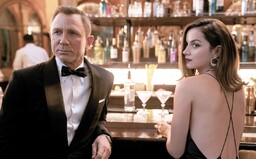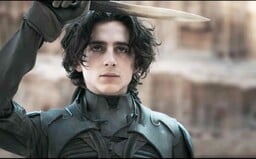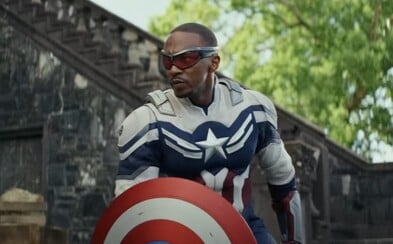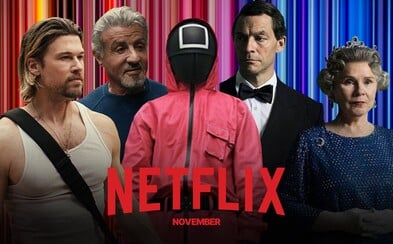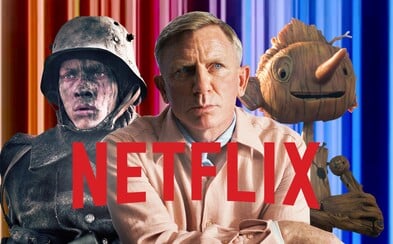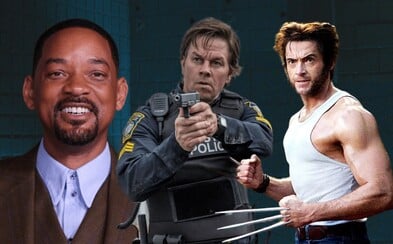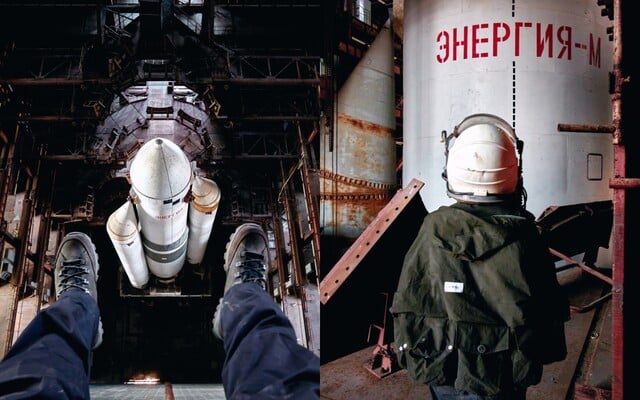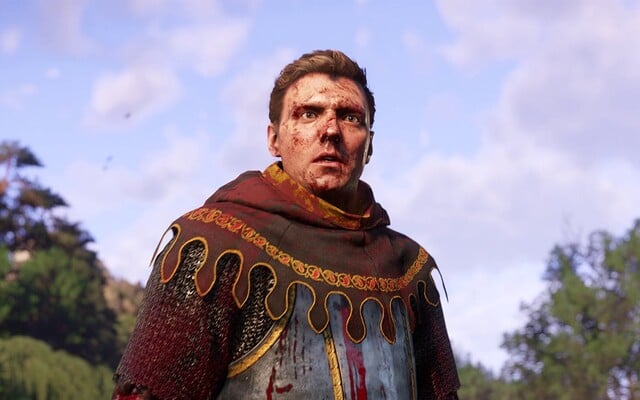 TOP 8 Oscar-winning romantic movies you must watch with your significant other on Valentine's Day
TOP 8 Oscar-winning romantic movies you must watch with your significant other on Valentine's Day
TOP 8 Oscar-winning romantic movies you must watch with your significant other on Valentine's Day
TOP 8 Oscar-winning romantic movies you must watch with your significant other on Valentine's Day
10 Facts You Most Likely Didn't Know About Dune
One of the most anticipated films of this year is screening in movie theatres these days - the film adaptation of Frank Herbert's cult masterpiece called Dune. Learn some interesting facts about how the book was created or its film adaptations.
If problems persis, please contact administrator.

Dune is definitely a phenomenon. The first book, published in 1965, appealed to millions of people around the world and became an absolutely essential science fiction work. Sort of a bible for all fans of this genre. It also won the prestigious Nebula Award. Created by the American writer Frank Herbert, it had five sequels: The Dune Messiah (1965), The Children of the Dune (1976), The Divine Emperor of the Dune (1981), The Heretics of the Dune (1984) and The House of Planets: The Dune (1985). The whole saga was supposed to be completed by the seventh book, but the writer didn't get a chance to write, unfortunately.
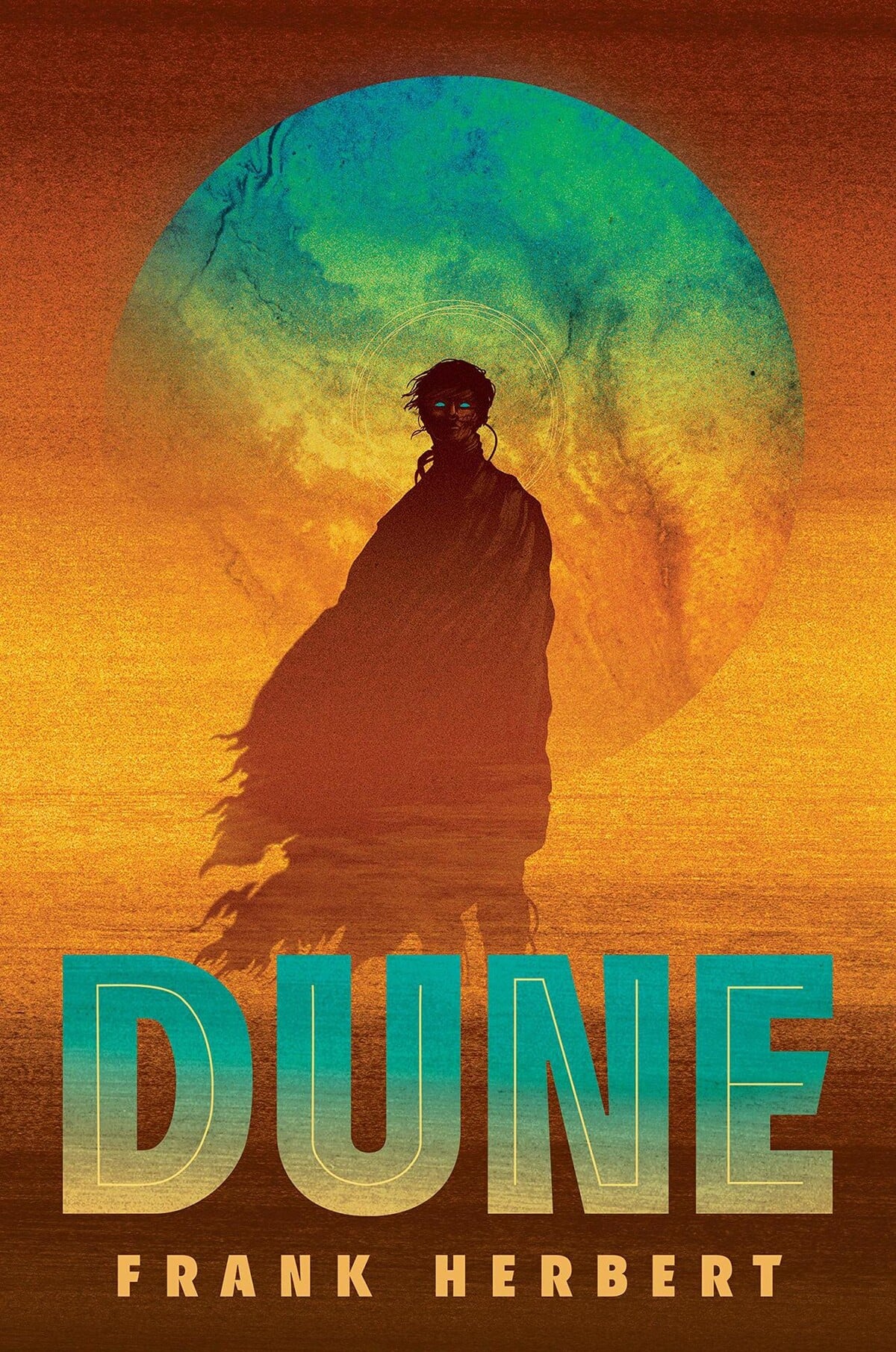
10. Dune was rejected by 23 publishers
Herbert's path to success was quite bumpy, but he didn't give up. He knew he had written something special. According to Futurism, before Dune went into press, it was rejected by 23 different publishers. Apparently, the plot, set in outer space with a complicated, layered story, seemed too lengthy and confusing to them. Everyone doubted that the book would sell.
The turning point was when Sterling Lanier, editor of Philadelphia-based Chilton Books, contacted the writer. The publishing company was best known for business magazines and automotive manuals. They decided to publish Dune in its entirety (previously it was issued in two parts thanks to Analog Magazine), the way the author always wanted it. And even though the sales didn't go as planned at first, more than 20 million copies were sold over time, and the book got translated into more than twenty languages.
9. Herbert read more than 200 books on religion and psychology before writing Dune
Herbert was passionate about psychology, especially the works of Sigmund Freud, Carl Gustav Jung and Martin Heidegger. He transformed the acquired knowledge into his debut sci-fi novel called The Dragon in the Sea that was published in 1956. Working on this book further stimulated his interest in religion, psychology and various types of regimes. According to Barnes & Noble, Herbert researched these topics in detail, collected notes and read almost 200 books that led him to come up with several ideas and stories, which he later put together in Dune.
Herbert's trip to the Oregon dunes in 1957 also proved to be a great inspiration. This aroused his interest in ecology, which is also covered in a huge part of the book. "Sand dunes pushed by steady winds build up in waves analogous to ocean waves except that they may move twenty feet a year instead of twenty feet a second. These waves can be every bit as devastating as a tidal wave in property damage… and they’ve even caused deaths. They drown out forests, kill game cover, destroy lakes, [and] fill harbors, " Herbert wrote in 1957.
8. Inspired by Zen Buddhism and Islamic mysticism
According to Mental Floss magazine, Herbert's son Brian wrote in Dreamer of Dune: The Biography of Frank Herbert that his father was attracted to Zen Buddhism (allegedly drawing a lot from the writings of the Zen master Alan Watts, whom he met in the 60s). In Dune it reflected in fictitious religious traditions with names such as "zensunni" and "zensufi".
These allegedly evolved from a combination of Zen Buddhism and so-called Sufism, also known as Islamic mysticism. It was a branch of Islam known for its mysticism and was supposed to represent the most peaceful and political form of this religion. The leader of this branch became the poet and thinker Jalal ad-Din Muhammad Rumi. According to Futurism, Herbert's book saga was also inspired by the political situation and conflicts in the Middle East at the time.
7. Dune was supposed to evoke the feelings you get after LSD use
It was obvious that someone would soon want to convert Herbert's work into film. The first one to try and devote a large part of his life to it in the 70s was the progressive, avant-garde Chilean-French director Alejandro Jodorowsky. By the way, a big fan of surrealism (he made the successful works El Topo and The Holy Mountain).
His vision was majestic, his obsession fascinating. Everything was so magnificent and ingeniously thought-out in detail that it was just too timeless and original for its time. Hollywood rejected it, just as Herbert's publishers once did. At the time, the film required a budget of about 15 million dollars and was meant to last several hours. Frank Pavich made a documentary called Jodorowsky's Dune explaining all of the circumstances surrounding the making of the film, which, unfortunately, was never finished.
"What is the goal of the life? It's to create yourself a soul. For me, movies are an art... more than an industry. And its the search of the human soul... as painting, as literature, as poetry. Movies are that for me. I wanted to make a film that would give the people who took LSD at the time the hallucinations that you get with that drug, but without hallucinating. I did not want LSD to be taken, I wanted to fabricate the drug's effects. This film was going to change the public's perceptions. My ambition with Dune was tremendous. So, what I wanted was to create a prophet. I want to create a prophet... to change the young minds of all the world." said Alejandro Jodorowsky in Pavich's document from 2013.
A fictional drug - rare melange spice - brings a touch of psychedelia to the planet Arrakis that can be felt from the very start. It reflects the interest and studies of consciousness alterations at the time. And according to Dangerous Minds, Herbert reportedly confessed to American mycologist Paul Stamets that he was inspired by his own experiences with hallucinogenic mushrooms when writing Dune.
6. Jodorowsky cast his 12-year-old son in the lead role
Jodorowsky immersed himself in the story and message of Dune so much that in order to be able to transfer emotions to the viewer as authentically as possible, he cast his son Paul Atreides (who already starred in the film El Topo) in the main role of Brontis.
At his father's command, he did a tough martial arts training to be able to portray all fights in the most credible way; while he was only an incredible 12 years of age. Jodorowsky told him, "You have to train like a real fighter." "I prepared him to play his role as accurately and as best he could, just as he did for Duke Leto," added the director in the Jodorowsky's Dune documentary .
Brontis had to learn karate, jiu-jitsu and various acrobatic stunts. He was trained by the stuntman and coordinator Jean-Pierre Vignau. According to his words, they practiced for six hours a day, seven days a week for two whole years. Young Jodorowsky thus learned to fight with his hands, knife and sword, and according to the director, he was fully prepared to portray the real Paul. Once you realize that the film has never actually seen the light of day, it's pretty disheartening.
5. Pink Floyd, Mick Jagger, Orson Walles, Salvador Dalí
However, if the film would have been made, it could undoubtedly be a fascinating work that no one dared to shoot before, with a stellar team of extremely talented artists. This is also evidenced by the fact that the music for Jodorowski Dune was supposed to be made by the legendary London art rock band called Pink Floyd. Allegedly, the director's meeting with the band didn't turn out exactly as intended. The musicians, according to the filmmaker in Pavich's documentary, were slightly arrogant, distant, ate burgers during the meeting and didn't pay much attention to what he was talking about.
At first, the disappointed director wanted to leave the meeting, but he got upset and scolded them. "Why don't you understand that I'm giving you an offer to collaborate on the most important film in human history. We will change the world, " he told them confidently, with a sudden change in the atmosphere. They stopped eating and started talking to him about how to make a whole album for the film.
The relentless Chilean-French director also wanted to get the famous Spanish painter Salvador Dali involved in the huge project to play the emperor. Allegedly, no one else could portray him. When Jodorowsky learned during a visit to New York that he was in the same hotel (St. Regis) as the painter, he wrote a message on a tarot card with the hanging symbol: "I want to see you, I'm going to make a film with you." That obviously appealed to him. since he briefly he replied, "I will meet you, I'll wait for you at the bar."
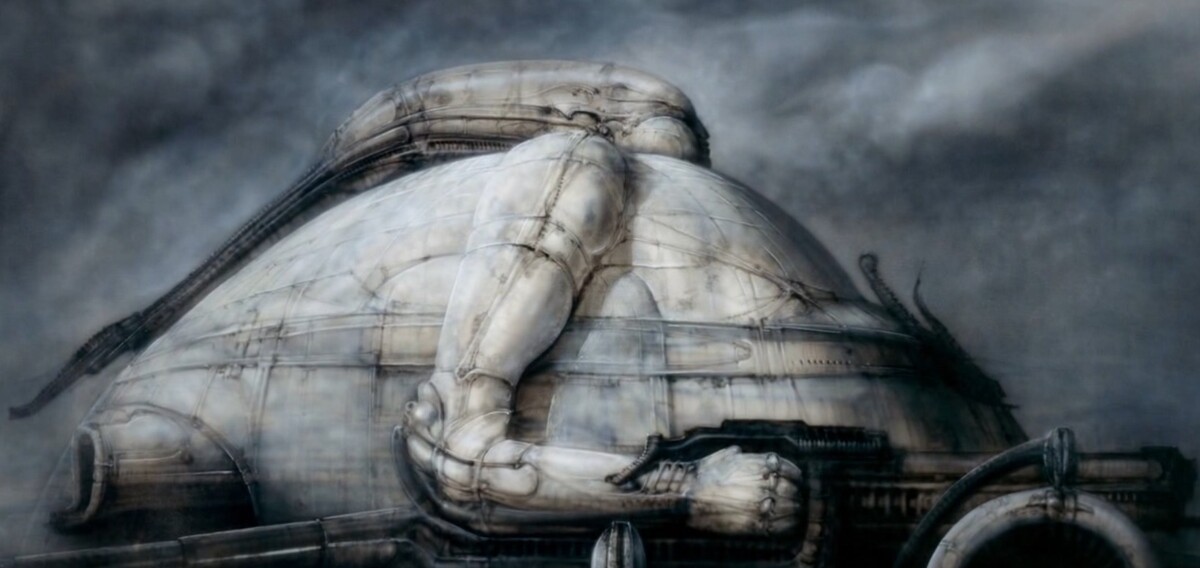
After several meetings in Paris, Barcelona and a long hesitation, Dalí told him: "I'll go for it, but I have to be the best paid actor in Hollywood. I want 100,000 dollars an hour," he said, according to the director in the Jodorowsky's Dune documentary. After compromising with the production, they agreed to cooperate, but it was clear that it was probably too big of a bite for everyone in terms of budget, and it was a bit unrealistic.
Anyway, Dali acquainted Jodorowski with the works of another important artist - the German Hans Rudolf Giger. He eventually took care of the beautiful designs for Baron Harkonnen's fortress (meant to be portrayed by the famous Hollywood director and actor Orson Walles; although he first refused to cooperate, Jodorowsky convinced him). The popular singer of the band The Rolling Stones, Mick Jagger, was also meant to be in the cast. After meeting Jodorowski, he did not hesitate to agree to cooperation.

4. Lynch version of Dune and his removal from credits
Another passionate American, David Lynch, was the one who eventually managed to make a film adaptation of Dune. Until then, he only had made two feature films - Eraseread (1977) and Elephant Man (1980). He did not have much experience with similar adaptations, which, unfortunately, was also reflected in the final form of his highly expected film. Moreover, before he agreed to adapt the Dune, he did not even read the book.
In an interview, Lynch revealed that when film producer Dino De Laurentiis called him and asked him if he was even familiar with Herbert's book, he said no, initially even thinking that the producer had said "June" instead of "Dune" on the phone.
It was a really huge project with a big expedition, extensive scenery and crew. According to the director, more than 1,700 people were on the set. The experienced Max von Sydow, Brad Dourif, Patrick Stewart and the singer Sting starred in the film, to name a few. Lynch entrusted Paul's role to young talent Kyle MacLachlan. He later made the cult television series Twin Peaks (1990 - 2018) with the director.
While the budget ranged from 40 to 42 million dollars, the film barely made a profit of 38 million in North America, and the film's critics tore the whole thing up. To this day, Dune is considered one of David Lynch's worst films, if not the ultimate worst. According to Indiewire, he thinks this is due to the fact that his creative vision was greatly affected by producers and the studio. He didn't even have control over the final cut. According to the Guardian, Universal Studios finally released a 137-minute cut that the American director hated so much that he insisted his name to be removed from credits. Special edition of the film has 190 minutes, director's cut 177 minutes.
3. The problem was in the first sentence already
According to Indiewire, the actress from Lynch's Dune, Francesca Annis, revealed that after hearing the first sentences of the film, it was already clear to her that it would turn out badly. "I’ll tell you, when I first went to see the film at the premiere — and I’ve only seen it once — as soon as Princess Irulan started to talk in voice-over at the beginning, explaining the story, I thought ‘Uh oh, this film is in trouble'," Annis told Deadline. "Any Hollywood film that has to explain itself in detail at the beginning is in trouble," she added.

Alejandro Jodorowsky, who expected a masterpiece from Lynch and trusted him because he respected him very much, said of his film version of Dune in Frank Pavich's documentary: "At first I was determined not to see Lynch's film, because since I've failed, I would be crushed with grief. But my sons said: "No, we are warriors, you have to see it.""
"So they took me to the cinema. I thought I would start crying right away, but I looked more and more closely and got really happy because it was terrible. It was a total failure. I know it's not nice to say, but that was my reaction. I also said to myself that David Lynch couldn't do that, because he's a great artist after all. It's the work of producers, " added Jodorowsky.
2. As close to nature as possible

According to Gizmodo, the Canadian director Denis Villeneuve, who worked on the latest film version, set a few conditions before agreeing to adapt. One of them was that Dune had to be filmed in an authentic environment, therefore in a real sandy desert. "The other condition that I had to shoot the movie was that I wanted to shoot in the real desert. My argument was, ‘They didn’t shoot Jaws in a swimming pool. I strongly believe that as human beings, what is around us has an impact on inspiration, " Villeneuve continued. He wanted to keep filming with the green screen and the use of CGI to a minimum.
"Dune is a kind of homage to ecosystems and life, and dedicated to ecology. It’s a beautiful poem about lifeforms, and at the time, it deeply touched me. For me, it was crucial to go there for real, to embrace nature, embrace the strength of nature. It’s something very memorable and powerful at the same time. I wanted to capture it on camera live, " the Canadian added. As he told Wired, he always had an emotional connection to the original and even read the book as a teenager when he was only thirteen years old.
Villeneuve finally filmed Dune in the most trusted area possible - the desert in Abu Dhabi; by the way, during the hottest months, which is in July and August, as Indiewire writes. He really tormented and tortured the crew, mostly the actors. They had to go through real hell in the heaviest costumes. According to actor Timotée Chalamet, the temperature during filming was sometimes up to 48.8 °C. There were allegedly special tents with air conditioning on the set so that the heat would not affect the staff or camera equipment too much. It was also filmed in Hungary, Norway and Jordan.
At the same time, you can clearly feel the commitment and transcendence to the present from the film, especially looking at the still current problem, which is climate change. "Maybe we need to change our ways of living, maybe we need to change our ways of dealing with nature and the world. And that takes a lot of courage and effort, and I think that Dune is a call for that," said Denis Villeneuve according to Gizmodo.
1. The roughest, hardest and longest shoot
Unlike David Lynch, who adapted the entire first book of Dune, Villeneuve told the audience only half of the story on the screen. He divided the book. He makes this clear right at the beginning with the title "part one". Nevertheless, the film has a duration of almost 155 minutes. In an interview with Variety, the Canadian revealed he originally wanted to shoot both parts at the same time.
"I feel that it's more time to digest the first experience and having taken lessons out of it and becoming more prepared and having more knowledge about what will happen and the way to approach it." One of the reasons was the fact that it would be too expensive for the studio. In an interview with Newsweek, the director said over time that he was grateful for how it turned out, because if he shot two parts at once, he would have been exhausted. Already the shooting of the first part was the roughest, hardest and longest he has ever experienced. It should also be added that the production was affected or prolonged by a coronavirus pandemic.
"When I did the first part, I really put all my passion into it in case it was the only one. However, I am optimistic, " Villeneuve added hopefully. One one of the most talented Hollywood directors, who has also produced films such as Incendies (2010), Sicario (2015) and Blade Runner 2049 (2017), according to Variety, he is allegedly working on the script of the second part and is ready to produce a prequel for HBO Max based on Bene Gesserit.
At the same time, the Canadian did not hide his enthusiasm for a possible second part, because, as he said himself, he would no longer have to explain so many things to the audience (which was necessary in the first part) and will be able to indulge more in the formal presentation. It should be a purely cinematic pleasure. "I don’t want to speak for everybody on the team, but I will say that we really created on this movie a feeling of family and to re-unify everybody again together, that would be paradise" he added for Variety.
If problems persis, please contact administrator.

